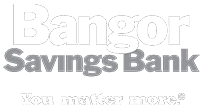
It's tempting when you pay so many of your bills online to skip on balancing your paper checkbook. And with electronic banking being popular and easily accessible, most consumers can quickly check their balances online.
Yes, you can check your balances using online banking, but what if you've forgotten about that $350 car payment and your financing company hasn't cashed the check yet? You might mistakenly think you have more money in your account than you really have.
That can lead to bounced checks and the fees that come with them.
With some basic bookkeeping abilities, you can quickly and accurately balance your checkbook to make sure that you never accidentally overdraft your account.
Be a good record keeper
Balancing your checkbook all starts with keeping good records. This means that you must keep track of every time you use your debit card to fill up your gas tank, write a check to your mortgage company or withdraw $20 in spending money from the local ATM.
As soon as you return home after making these purchases, writing these checks or withdrawing that cash, write down the amounts you've removed from your checking account in your checkbook's paper ledger. And write down these amounts exactly, down to the last cent. You need to know exactly how much money is in your checkbook if you hope to balance it.
Ask for your bank statement
Before balancing your checkbook, you'll need access to your most recent bank statement. This could be simple if your bank offers eStatements. Simply log onto your bank's website, type in your user name and password and call up your current account balance. The odds are your bank will list your current balance and your most recent statements.
If you don't have access to online banking, you'll either have to stop in or call your bank to request your most recent bank statement. If you receive paper account statements on a regular basis, you can use those.
What's cleared?
Next, check your checkbook ledger to determine which of your payments haven't yet cleared. For instance, if you mailed a check to your daughter's preschool for $500 and the school hasn't yet cashed it, you'll need to note this when balancing your checkbook. Your account might have $4,000 in it. But you'll need to subtract that $500 preschool payment from this balance to have an accurate record of where you stand financially.
You'll need to do the same if you've made deposits to your checking account that haven't yet cleared. For instance, a client may have sent you $500 through PayPal, but deposits made through PayPal can take up to three business days to actually get into your checking account.
Remember, you don't have to be an accountant to balance your checkbook. You just need to be willing to take a small amount of time on a regular basis -- once a week or once a month, to track what you've spent and what you've earned.
